Views: 71 Author: Site Editor Publish Time: 2023-05-22 Origin: Site
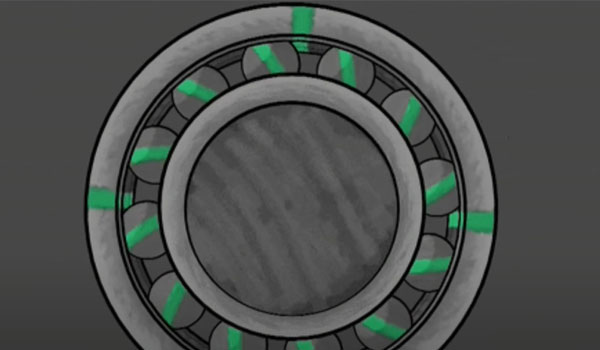
Roller bearings are the unsung heroes of the industrial machinery world. They operate quietly and ceaselessly behind the scenes, ensuring the seamless operation of an array of diverse equipment. As vital mechanical assemblies, their fundamental purpose is to reduce friction between moving parts. This vital role results in a more streamlined operation of machinery and reduces the energy necessary for movement.
The impact of roller bearings extends beyond just the efficiency of the machinery they are assisting. They also significantly contribute to the longevity of these machines. This is primarily due to the friction reduction they provide, which effectively mitigates wear and tear. Consequently, they enhance the lifespan of the machine parts they assist in moving.
Additionally, roller bearings are meticulously designed to bear heavy loads, further emphasizing their indispensability. Their unique design, which typically includes inner and outer rings with rolling elements sandwiched between, allows for load distribution over a larger area. This feature helps to avert the deformation of machine components due to the weight they are required to support. Therefore, roller bearings represent the successful union of precision engineering and practical functionality, playing an essential role in the lifespan and performance of industrial machinery. Their influence in the machinery world is, undoubtedly, essential and impactful.
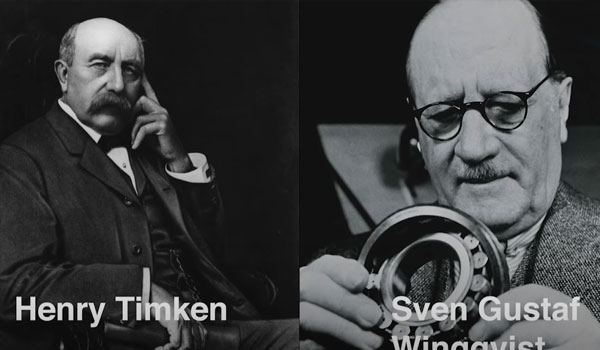
The journey of roller bearings, a crucial component in numerous modern mechanical systems, finds its roots in the innovative methods of ancient Egyptians. These early civilizations identified the potential benefits of minimizing friction. They achieved this by placing hefty objects, such as stones used for their monumental structures, on logs. These logs functioned as rollers, enabling the heavy objects to be transported more easily across great distances. Despite its simplicity, this technique laid the groundwork for the concept of roller bearings. Although this method was quite basic, it marked the first known application of the principles that underpin roller bearings.
The evolution of roller bearings witnessed a significant leap during the Renaissance period, due largely to the inventive mind of Leonardo da Vinci. He conceptualized and created sketches of ball bearings in the 15th century, bringing a level of precision and understanding that had not been seen before. Despite his groundbreaking work, it was not until the Industrial Revolution in the 18th and 19th centuries that the demand for bearings truly surged.
The onset of machinery and mechanized production lines during the Industrial Revolution necessitated smoother and more reliable movement. As a result, roller bearings became a vital component of these systems. This led to a boom in their development and refinement. The outcome of these centuries of progress is the highly efficient and varied range of roller bearings we see today, underscoring the continuous technological advancement in this field.
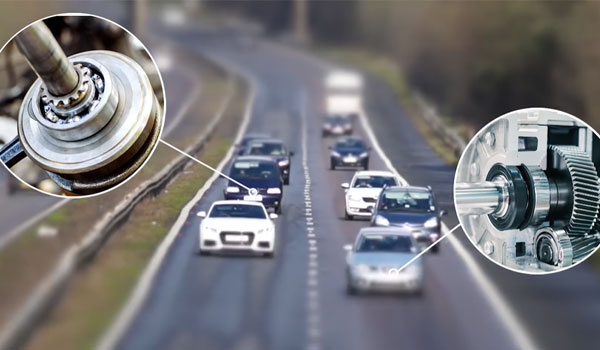
Roller bearings serve as essential elements, frequently working inconspicuously across numerous sectors such as automotive, aerospace, manufacturing, and energy industries. Their main purpose is to facilitate the smooth movement of machine components with reduced friction, thereby significantly diminishing wear and tear. The ubiquity of these bearings in virtually all mechanical systems emphasizes their tremendous significance. Their capacity to endure substantial radial loads and promote fluid motion has resulted in their extensive use in vehicles, aircraft, and sizable industrial machinery.
Furthermore, roller bearings have expanded beyond conventional industries, finding their place in the innovative realm of robotics. The accurate and effective functioning of robots depends on the seamless movement and rotation of their components, making roller bearings essential. Robots demand a high level of precision, and roller bearings deliver exactly that, playing a crucial role in maintaining their accuracy and dependability.
In the realm of energy, roller bearings are integral parts of wind turbines, assisting in converting wind power into electricity with minimal mechanical losses. Their utilization in such a wide array of fields demonstrates their adaptability and the critical role they occupy in various industries. While roller bearings may not be visible, their impact on propelling technological progress and industrial productivity is indisputable.
A roller bearing, a crucial mechanical component, consists of two primary parts: an inner and an outer raceway. These raceways are designed to enclose the rolling elements, which are the actual 'rollers' responsible for carrying the load. The rollers, which are cylindrical in shape, play a vital role in reducing friction as the bearing rotates, ensuring smooth and efficient operation.
In addition to the raceways and rollers, a cage is typically incorporated into the roller bearing assembly. The primary function of this cage is to maintain consistent spacing between the individual rollers, effectively preventing them from colliding with one another during the bearing's operation. This even spacing is essential for maintaining the overall performance and longevity of the roller bearing.
Essentially, a roller bearing is a carefully designed mechanical component that comprises an inner and outer raceway, cylindrical rolling elements, and a cage. Together, these elements work in harmony to carry loads and minimize friction, allowing for the smooth and efficient rotation of the bearing during its operation.
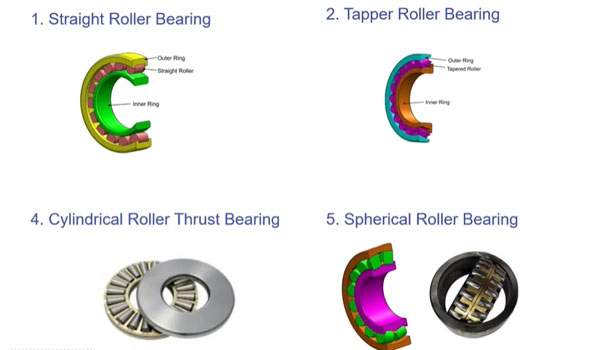
There are several types of roller bearings, each designed to serve different applications:
● Cylindrical Roller Bearings: These are designed to manage heavy radial loads and high-speed operations. The rollers are essentially elongated, which allows a greater contact area with the raceway.
● Tapered Roller Bearings: These bearings can handle both radial and axial (thrust) loads. They feature tapered rollers and raceways, facilitating the handling of combined loads.
● Spherical Roller Bearings: These bearings are designed to manage high radial loads and moderate axial loads. They accommodate misalignment of the shafts and housing, making them ideal for heavy-duty applications.
● Needle Roller Bearings: These are characterized by long, thin rollers and are used in applications where radial space is limited.
When it comes to choosing materials for roller bearings, several factors must be taken into consideration, such as the load they will bear, the speed at which they will operate, the temperature they will be exposed to, and the environmental conditions they will encounter. One of the most commonly used materials for roller bearings is steel, primarily because of its exceptional durability, resistance to heat, and ability to withstand corrosion.
In certain specialized applications, alternative materials like ceramics and special alloys may be employed due to their unique properties that offer specific advantages. For instance, ceramic materials are known for their lightweight nature, low thermal expansion, and high resistance to wear, making them suitable for high-speed applications or situations where reduced friction is desired. On the other hand, special alloys can provide enhanced corrosion resistance, increased strength at high temperatures, or improved wear resistance, depending on the specific alloy composition.
The material selection process for roller bearings is a crucial aspect of their design and performance. By carefully considering factors such as load, speed, temperature, and environmental conditions, engineers can select the most appropriate material, whether it be steel, ceramics, or special alloys, to ensure optimal performance and longevity of the roller bearings in their intended applications.
Related Post might be HELPFUL to your Business: The Ultimate Guide to Purchasing Roller Bearings
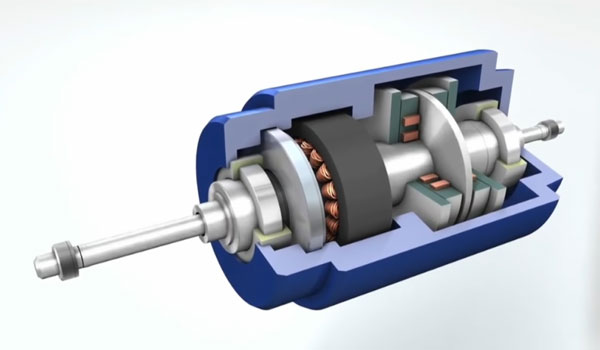
Roller bearings are an essential component in many machines and devices, enabling smooth and efficient movement. The working principle of roller bearings involves the inner and outer races, rolling elements, and lubrication. The inner race is connected to a rotating shaft, while the outer race remains stationary, attached to the housing. The rolling elements, which can vary in shape and size, bear the load and minimize friction by ensuring smooth relative motion between the races.
There are different types of roller bearings, including ball bearings, tapered roller bearings, and needle roller bearings. Ball bearings have a small contact area, providing low rolling friction, which enables them to accommodate high speeds but limits their load-carrying capacity. Tapered roller bearings can support radial and thrust loads but can only handle unidirectional axial loads, requiring a second laterally reversed bearing for counterstay. Needle roller bearings have a much larger roller length than diameter, making them suitable for applications with limited radial space.
Lubrication plays a vital role in the operation of roller bearings, minimizing friction, dissipating heat, protecting against corrosion, and extending the bearing's life. The choice of lubricant can significantly impact the bearing's performance and longevity. Bearings capped on both sides are factory-filled with grease, providing an economic and space-saving solution compared to external sealing. Proper lubrication maintenance is crucial to ensure the bearing's optimal performance and prevent premature failure.
Roller bearings are a type of mechanical component that is used to replace sliding movement with low friction, rolling motion in rotary applications. They are designed to support heavy radial and axial loads, making them suitable for a wide range of applications. One of the most notable advantages of roller bearings is their high load-bearing capacity. In general, roller bearings offer higher load capacities than ball bearings of the same size.
Roller bearings contribute to the efficiency and speed of machinery. By reducing friction and ensuring smooth operation, they allow for faster speeds and more efficient energy use. This is because they have a larger contact area than ball bearings, which means they can distribute the load more evenly. Additionally, advances in sealing technologies have enabled the development of sealed bearings that do not require grease replenishment over their lifetimes. This makes them more efficient and easier to maintain.
Roller bearings are also robust and durable. They can withstand harsh operating conditions and high temperatures. However, like any mechanical component, they require periodic maintenance to ensure their longevity. Regular lubrication, cleaning, and inspection for wear and tear are essential maintenance practices. Proper bearing maintenance includes the right lubricant and lubricating method, which will help your bearings last longer. Roller bearings are available in different types, including cylindrical, spherical, and tapered, each with its own unique features and benefits
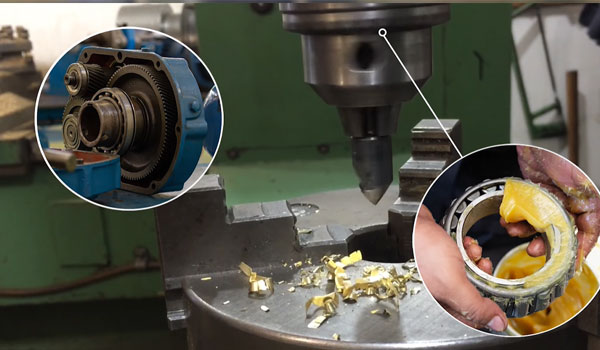
Roller bearings play a crucial role in various industries, including manufacturing and assembly lines, the auto industry, aerospace, energy, and robotics. In manufacturing and assembly lines, roller bearings support conveyor belts, motors, and other machinery, enabling them to handle heavy loads and maintain high speeds. In the automotive industry, roller bearings are used in engines, transmissions, wheels, and other parts to ensure smooth operation, improve fuel efficiency, and increase the vehicle's lifespan. The aerospace and defense industry relies on roller bearings for the smooth operation of aircraft engines, landing gears, and various other systems. The bearings used in this sector must meet stringent requirements for precision, reliability, and resistance to extreme conditions.
In energy and power plants, roller bearings are used in turbines, generators, and pumps to facilitate the efficient conversion of energy, ensure the reliability of power generation, and withstand the challenging conditions of these environments. In the field of robotics and automation, roller bearings are used in robotic arms, automated guided vehicles (AGVs), and other automated systems to enable precise movements, improve system performance, and reduce maintenance requirements.
Roller bearings are foundational in many industries, enabling the efficient and reliable operation of machinery and systems. They are designed to carry a load while minimizing friction, using cylinder rolling elements to maintain the separation between moving parts of the bearing. The components of a typical rolling bearing include an inner ring, an outer ring, balls or rollers as rolling elements, and a cage. Bearing installation considerations include the bearing combination, the mounting of the bearings, and the provision of lubrication.
Related Post might be HELPFUL to your Business: Choosing the Right Cylindrical Roller Bearings
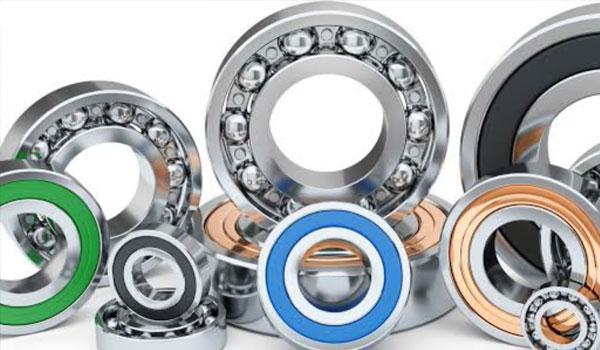
Roller bearings are a crucial component in many industrial applications, from heavy machinery to power generation. Despite their robust design, roller bearings can fail due to various reasons, including overloading, improper installation, insufficient lubrication, and contamination. Regular inspection and maintenance are vital in preventing these issues. Maintenance strategies for roller bearings include routine lubrication, periodic inspection for wear and tear, and proactive replacement of worn-out bearings. Advanced techniques such as condition monitoring can also be used to predict potential failures and schedule maintenance activities accordingly.
Technological advancements are continually improving the durability and efficiency of roller bearings. Developments in materials science, lubrication technologies, and digital monitoring systems are enhancing bearing performance and extending their service life. For example, advances in sealing technologies have enabled the development of sealed bearings that do not require grease replenishment over their lifetimes. Additionally, roller bearings come in a variety of shapes, including cylindrical, tapered, spherical, and needle profiles, to suit various applications. Tapered and spherical roller bearings, in particular, are best at managing combined radial and thrust loads.
Understanding the influence of bearing component roundness errors and roller number on the rotational accuracy of rolling bearings is crucial in the design of high precision bearings. The two basic types of rolling element distinguish the two basic types of rolling bearing: ball bearings and roller bearings. Balls and rollers are different in how they make contact with the raceways. Balls make point contact with the ring raceways, while rollers have line contact. This gives roller bearings greater shock resistance and capacity, making them the preferred solution for heavy-load industrial applications. Proper bearing maintenance includes the right lubricant and lubricating method, which will help your bearings last longer.
Roller bearings are a crucial component in many industrial, automotive, marine, and aerospace applications. The advent of digitalization and Industry 4.0 is revolutionizing roller bearing technology. Predictive maintenance, enabled by IoT sensors and advanced analytics, is allowing for more efficient use and maintenance of bearings. This technology is helping to reduce downtime and maintenance costs, as well as improve the overall performance of the bearings. The use of digital twins is also becoming more common in the industry, allowing for real-time monitoring and analysis of bearing performance.
With increasing emphasis on sustainability, the roller bearing industry is moving towards green manufacturing practices. This includes the use of eco-friendly materials and lubricants, energy-efficient production processes, and recyclable packaging. Innovative materials like ceramics and carbon composites are being explored for their potential to improve bearing performance. These materials have the potential to reduce friction, increase load-bearing capacity, and improve the overall lifespan of the bearings. The use of green manufacturing practices is not only beneficial for the environment but also for the industry, as it can help to reduce costs and improve efficiency.
Simultaneously, design improvements are being made to enhance load-bearing capacity, reduce friction, and increase operational life. The use of advanced materials and coatings is helping to improve the performance of roller bearings in extreme conditions. For example, the use of diamond-like carbon coatings can help to reduce friction and wear, while also improving the overall lifespan of the bearings. Additionally, the use of advanced simulation and modeling techniques is allowing for more accurate predictions of bearing performance, helping to optimize designs and reduce the risk of failure.
Roller bearings are an essential component of various machines and equipment, contributing to increased efficiency, durability, and speed in the industrial sector. They are designed to carry a load while minimizing friction, and they transmit loads using cylinder rolling elements, rather than balls, to maintain the separation between moving parts of the bearing. Roller bearings are used in a wide range of applications, including automotive, industrial, marine, and aerospace applications, and they are routinely monitored as part of predictive-maintenance programs.
The future of roller bearings is bright, with the advancement of digital technologies, green manufacturing practices, and innovative materials. Tapered roller bearings, for example, can support both radial and axial loads and generally carry higher loads than ball bearings due to greater contact area. They can withstand high axial loads, offer great accuracy, and are used to adjust the axial displacement. Cylindrical roller bearings, on the other hand, are the simplest of the roller bearings family, and they can face the challenges of heavy radial loading and high speed. They also offer excellent stiffness, axial load transmission, low friction, and long service duration.
In summary, roller bearings are truly the unsung heroes of the industrial sector, and their importance cannot be overstated. With the evolution of roller bearings, we can expect to see even more durable, efficient, and sustainable roller bearings in the years to come. Their evolution will continue to shape the landscape of various industries, powering the machines that make our world work.
Related Post might be HELPFUL to your Business: Choose The Right Tampered Roller Bearings
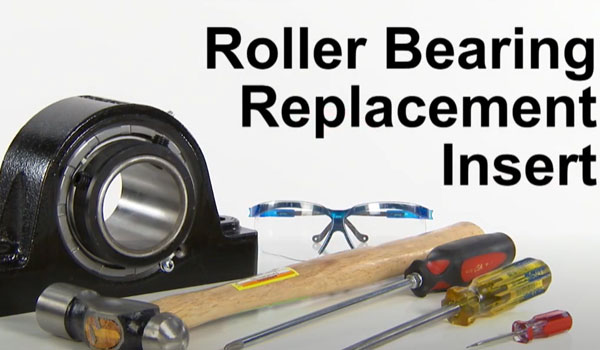 Insert Bearings: Enhancing Eff
Insert Bearings: Enhancing Eff
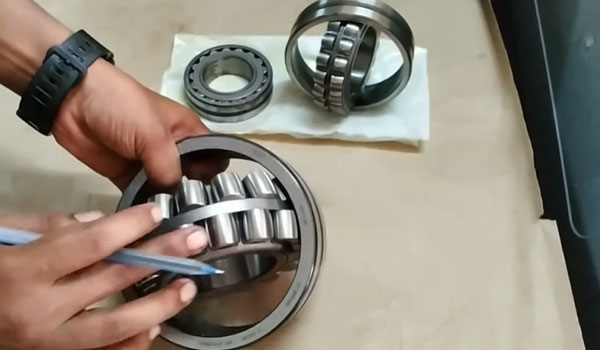 Where to buy cost-effective sp
Where to buy cost-effective sp
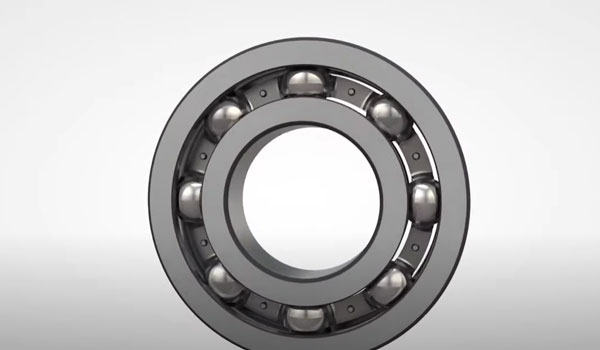 How To Choose the Right Deep G
How To Choose the Right Deep G
 Roller Bearings: The Unsung He
Roller Bearings: The Unsung He